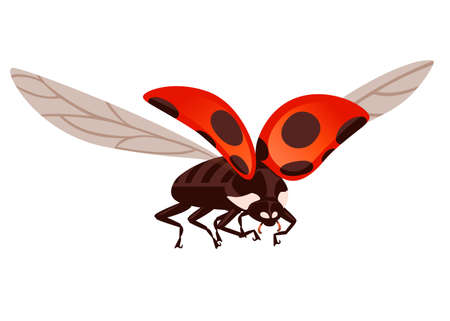Understanding Common Pests and Diseases in UK Gardens
When cultivating spring bulbs in the UK, it’s vital to recognise the typical pests and diseases that threaten their health. Among the most prevalent culprits are slugs and snails, which can quickly devour tender shoots, leaving ragged holes and stunted growth in their wake. Another frequent pest is the narcissus bulb fly; its larvae burrow into bulbs, causing them to rot from within and resulting in weak or absent blooms. Aphids are also notorious for infesting fresh foliage, not only weakening plants by sucking sap but also spreading viral diseases. Fungal infections such as grey mould (Botrytis) and basal rot target bulbs during wet spells, producing mushy patches, discoloured leaves, and a general decline in vigour. Recognising these signs early—such as yellowing leaves, distorted growth, or soft spots on bulbs—can make all the difference in keeping your garden vibrant throughout spring.
2. Early Detection: Spotting Trouble Before It Spreads
Catching pests and diseases early is key to keeping your spring bulbs healthy and vibrant in UK gardens. Being observant and knowing what to look out for can help you tackle problems before they become widespread. Here are some practical tips for early detection:
Signs to Watch Out For
Careful observation is your first line of defence. Walk around your garden regularly and check your bulbs for any changes. Common early warning signs include:
- Leaf discolouration: Yellowing, browning, or unusual spots can indicate a problem.
- Chewing damage: Ragged edges or holes in leaves often signal the presence of slugs, snails, or other pests.
- Stunted growth: If shoots or flowers appear smaller than expected, this could be a symptom of disease or pest activity.
- Mould or rot: Soft, mushy bulbs or white fungal growth at the base may point to fungal infections.
- Wilting: Even with enough water, plants might wilt if roots have been damaged by pests or disease.
Common Signs Table
| Sign | Possible Cause | What to Do Next |
|---|---|---|
| Yellow Leaves | Nutrient deficiency, overwatering, virus | Check soil moisture and feed as needed; remove affected plants if viral |
| Chewed Leaves | Slugs, snails, caterpillars | Inspect at night; use barriers or organic pellets as appropriate |
| Mould on Bulb/Stem | Fungal infection (e.g., botrytis) | Remove infected material and improve air circulation |
| Browning Tips | Pest feeding or bulb rot | Lift and inspect bulbs; treat or discard as needed |
| Poor Flowering | Nematodes, viruses, nutrient issues | Rotate crops; test soil; use certified disease-free bulbs next season |
Routine Checks Make All the Difference
Set aside a few minutes each week during spring to look over your bulbs. Early action not only saves time and money but also helps protect pollinators by reducing the need for harsh chemical controls. Being proactive ensures your garden remains colourful and healthy throughout the season.

3. Natural Prevention and Traditional British Remedies
Protecting your spring bulbs doesnt always require chemicals. Many British gardeners prefer natural, eco-friendly methods that are both effective and gentle on the environment. One popular approach is companion planting—growing certain plants alongside your bulbs to deter pests naturally. For example, alliums such as garlic or chives can help keep aphids and slugs at bay, while marigolds are well-known for repelling nematodes and other soil-borne threats.
Traditional British remedies have stood the test of time, often passed down through generations. Sprinkling crushed eggshells or grit around bulbs is a classic method to discourage slugs and snails. Another old favourite is using soapy water sprays made from mild washing-up liquid to control aphids without harming beneficial insects.
Herbal infusions, like chamomile tea, have also been used in cottage gardens across the UK to prevent fungal diseases such as damping-off, especially in damp springs. Many gardeners swear by mulching with homemade compost or leaf mould, which not only nourishes the soil but also helps protect bulbs from sudden temperature changes and suppresses weeds.
By blending these time-honoured techniques with modern knowledge, you can create a healthy, resilient garden that thrives year after year—just as generations of British gardeners have done before you.
4. Modern Solutions and Safe Chemical Treatments
When traditional methods are not enough to protect spring bulbs from persistent pests and diseases, UK gardeners turn to modern solutions and carefully approved chemical treatments. Its essential to use products that are safe for the environment, beneficial insects, pets, and humans while still being effective against common problems like aphids, slugs, bulb rot, and fungal infections.
Approved Products for UK Gardens
The UK has strict regulations regarding pesticide and fungicide use in home gardens. Only products authorised by the Health and Safety Executive (HSE) should be used. Here is a table summarising some commonly used and widely available options:
| Pest/Disease | Approved Product Type | Common Brand Examples | Safe Application Notes |
|---|---|---|---|
| Aphids & Soft-bodied Insects | Fatty Acid/Soap Sprays | Bayer Bug Free, Ecofective Bug Killer | Spray early morning or evening; avoid direct sunlight to prevent leaf scorch. |
| Slugs & Snails | Ferric Phosphate Pellets (Slug Bait) | Growing Success Slug Killer, Sluggo | Scatter sparingly around bulbs; keep away from water sources. |
| Fungal Diseases (e.g., Botrytis) | Sulphur-based Fungicides | Vitax Sulphur, Bayer Garden Systhane Fungus Fighter* | Apply at first sign of disease; follow label for repeat intervals. |
| Bulb Rot Prevention | Copper-based Fungicide Dips** | Bordeaux Mixture (where permitted) | Dip bulbs before planting; ensure bulbs are dry before storage. |
*Some products may be withdrawn or restricted; always check current regulations.
**Copper-based treatments should be used sparingly as overuse can harm soil health.
Safe Application Practices
- Read Labels Thoroughly: Always follow manufacturer’s instructions and recommended dosages precisely.
- Avoid Windy Days: Apply sprays when it is calm to minimise drift onto non-target plants or areas.
- Protect Wildlife: Take care to keep chemicals away from ponds, bee hives, and wildflower patches.
- PPE: Wear gloves and wash hands after handling any garden chemicals.
- Storage: Store all treatments out of reach of children and pets in a cool, dry place.
Sustainable Alternatives
If you prefer a more natural approach, consider neem oil sprays or garlic barriers—both are popular among UK organic gardeners and offer gentle protection with minimal environmental impact.
By choosing approved products and applying them with care, you can effectively manage pests and diseases in your spring bulb garden while respecting the unique British environment.
5. Good Gardening Habits for Year-Round Protection
Establishing good gardening habits is essential for keeping spring bulbs healthy and resilient against pests and diseases in the UK. Simple, regular routines can make all the difference when it comes to long-term protection and thriving displays each year.
Keep It Clean
Always clear away dead leaves, spent flowers, and plant debris from your beds and borders. This helps remove hiding spots for slugs, snails, and fungal spores that may harm your bulbs. Wash tools after use, especially if you have been working with infected plants, to prevent spreading problems around your garden.
Practise Crop Rotation
If you grow bulbs in the same spot year after year, soil-borne diseases can build up. Try rotating your bulb planting areas each season—this is especially effective if you mix in other types of plants or rest a bed for a year. Crop rotation interrupts the life cycles of pests and reduces disease pressure naturally.
Store Bulbs Properly
After lifting bulbs post-flowering (such as tulips or hyacinths), dry them thoroughly in a cool, airy place. Remove any damaged or mouldy bulbs before storing. Place healthy bulbs in labelled paper bags or mesh trays somewhere dry and frost-free until autumn planting. Good storage prevents rot and keeps your bulbs ready for another season’s success.
Consistent Routine Matters
By integrating these simple habits into your gardening calendar, you create an environment where pests and diseases struggle to take hold. Consistency is key: a little effort throughout the year leads to vibrant spring displays and less trouble season after season.
6. When to Seek Local Expert Advice
If you find yourself facing persistent problems with pests or diseases despite your best efforts, it may be time to turn to local experts for help. Recognising when an issue is beyond general advice is key to protecting your spring bulbs and garden. Don’t hesitate to connect with neighbourhood gardening groups—these communities often have members who have dealt with similar issues in your area and can offer practical tips tailored to the UK climate.
The Royal Horticultural Society (RHS) is another invaluable resource for British gardeners. If you notice unusual symptoms on your bulbs, such as unexplained wilting, spots, or recurring infestations, contacting the RHS plant health service can provide professional guidance. The RHS website offers detailed information, and members can send in photos or samples for expert diagnosis.
Approaching local gardening clubs is simple: many towns have regular meetings or online forums where you can post questions and photos. Sharing your experiences with others not only brings solutions but also strengthens community knowledge. Remember, early intervention with expert support can make all the difference in keeping your spring bulbs healthy and vibrant throughout the season.


